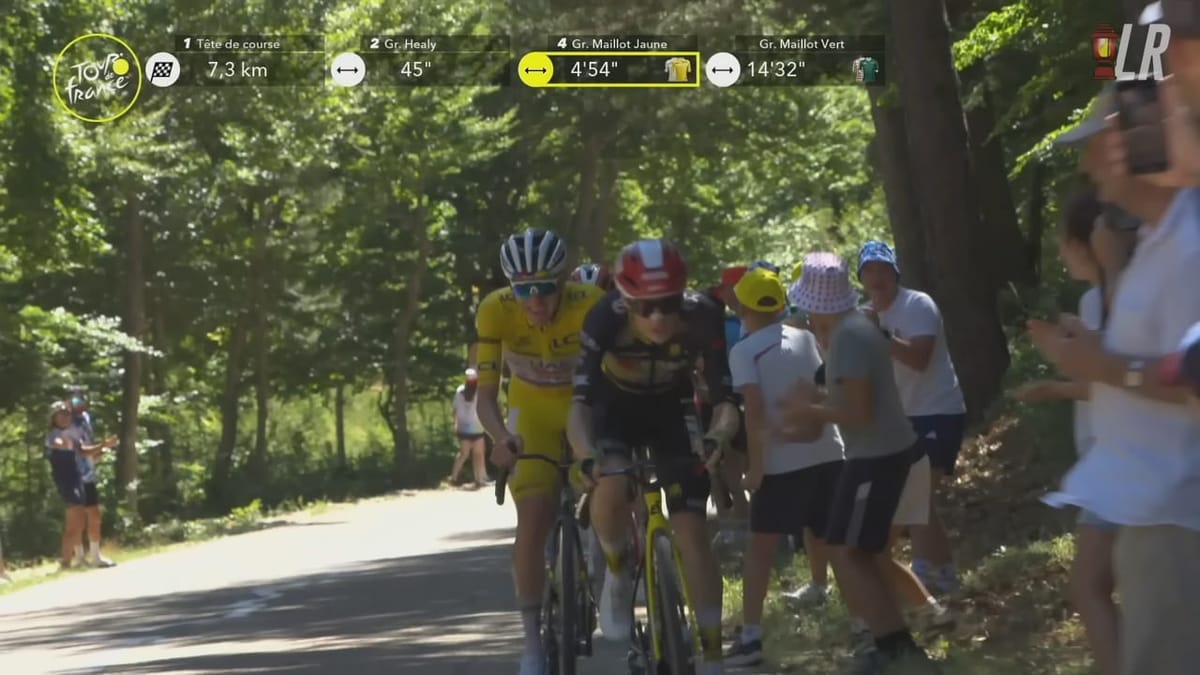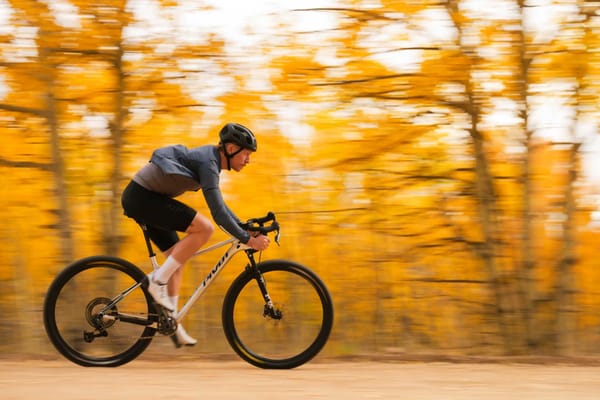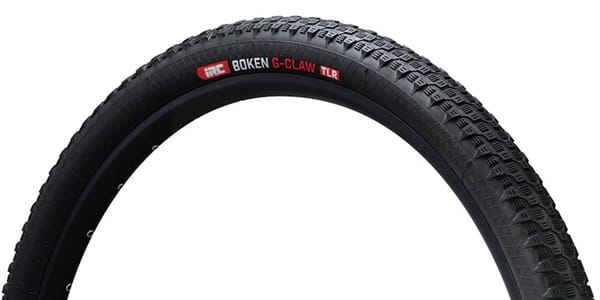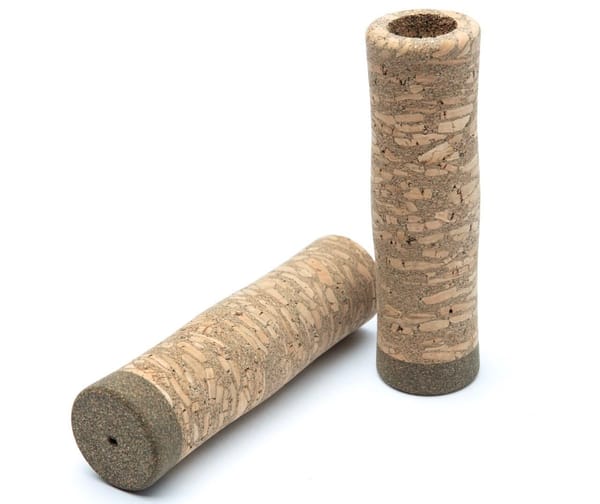Weekly Briefing - Pogačar's Tour de Force, The 4R Recovery Revolution, and Your Ultimate Training Blueprint
This week, we dissect Tadej Pogačar's tactical genius at the Tour, unveil the new 4R framework for total recovery, and deliver fresh training plans for gravel, indoor cycling, and the weight room. Plus, the hottest new gear drops.

At the razor's edge of human performance, where the slopes of the Pyrenees meet the limits of endurance, the 2025 Tour de France is unfolding as a masterclass in modern cycling. The image of Tadej Pogačar, dancing on the pedals, dispatching his rivals with relentless, surgical attacks, is one for the ages.His form appears otherworldly, a product of talent so immense it seems beyond comprehension. Yet, while the rider is unique, the principles that forge such dominance are not. They are rooted in a relentless pursuit of optimization—a philosophy where every watt, every gram, and every calorie is accounted for.
This week, we pull back the curtain on that philosophy. We move beyond the spectacle to analyze the science and strategy that separate the good from the truly great. From the tactical doctrine that is cementing Pogačar's control over the peloton to the revolutionary new frameworks in nutrition that can redefine recovery for every cyclist. This edition is a briefing on how to apply those same principles of meticulous optimization to your own riding. It’s about understanding the systems behind the success and harnessing them to unlock your own potential, whether on the road, the gravel, or in the gym.
The Pro Peloton: Pogačar's Masterclass and the Art of the Tour
The past week of the Tour de France, from July 14th to the 21st, has been less a race and more a coronation procession for Tadej Pogačar. But to simply watch the results is to miss the intricate stories of tactical genius, technological artistry, and the brutal realities of Grand Tour racing that play out on the roads of France.
The Art of Domination: Analyzing the Pogačar Doctrine
Tadej Pogačar's commanding performance across stages 13, 14, and 15 has been a showcase of absolute athletic supremacy. It began with his victory in the Stage 13 individual time trial to Peyragudes, a brutal mountain ITT where he put significant time into his rivals.This was followed by another display of force on Stage 14, where he again beat Jonas Vingegaard and Remco Evenepoel, extending his overall lead to nearly two minutes.This ability to dominate a mountainous 180-kilometer trek one day and then crush a specialized time trial the next demonstrates a versatility that is the hallmark of a modern Grand Tour champion.
This dominance, however, is not merely a function of a superior power-to-weight ratio. It is the result of a holistic system of performance optimization, where every element works in concert. A critical, and often under-discussed, factor is what has been described as his"radical bike position", a setup honed over years of biomechanical research that allows him to translate his raw physical power into unparalleled aerodynamic efficiency.This meticulous attention to his position on the bike means he can sustain higher speeds for the same effort, a tangible advantage that manifests across every type of terrain. It is a powerful reminder that in modern cycling, the engine, chassis, and aerodynamics are inseparable components of success.
Further cementing his control is the formidable strength of his UAE Team Emirates squad. The victory of his key Belgian support rider, Tim Wellens, on Stage 15 in Carcassonne is a testament to this depth.A team this dominant can afford to let key domestiques hunt for their own glory. This tactic not only boosts team morale but also places the strategic burden on other teams, forcing them to chase down dangerous moves while Pogačar's primary rivals are left isolated. It creates a powerful feedback loop: individual dominance is amplified by team strength, which in turn creates more opportunities for tactical superiority, making the Pogačar doctrine appear all but insurmountable.
Battles Beyond Yellow: Breakaways, Brawls, and Farewells
While the maillot jaune seems firmly on Pogačar's shoulders, the race for other honors and the fight for stage glory has been fiercely contested. The withdrawal of a major GC contender fundamentally reshapes the dynamics of the race, and the departure of Remco Evenepoel prior to Stage 14 did just that.His absence created a power vacuum, transforming the objectives of multiple teams overnight.
This was immediately evident on Stage 14, where Thymen Arensman of INEOS Grenadiers took a superb victory from the breakaway.While Pogačar and Vingegaard battled behind him, the stage win became the primary objective for teams like INEOS, whose GC hopes had shifted. The news of Evenepoel's exit meant his Soudal Quick-Step team immediately pivoted its strategy, shifting its formidable resources to support sprinter Tim Merlier in his quest for stage wins.This strategic shift intensifies the competition for other jerseys, particularly the green jersey for the points classification.
The battle for green has been a compelling narrative, with Lidl-Trek's Jonathan Milan emerging as a dominant force. His powerful victory on Stage 8, where he out-sprinted Wout van Aert, marked the end of an 113-stage drought for Italian riders at the Tour.Supported by a well-drilled lead-out train, Milan has showcased the speed and tactical acumen required to challenge for the prestigious jersey, making the daily intermediate sprints and chaotic bunch finishes a must-watch spectacle.The departure of a top GC rider doesn't diminish the race; it channels the immense competitive energy of the peloton into different, equally thrilling narratives.
The Canvas and the Machine: Lidl-Trek's Rolling Masterpiece
In a peloton of high-tech carbon, one machine has consistently captured the eye this week: the stunning, art-inspired Trek Madone ridden by the Lidl-Trek team. Dubbed "Couler"—French for "to flow"—the Project One paint scheme is directly inspired by the movement and spontaneity of abstract expressionist artists like Henri Matisse and Jackson Pollock.The bold brushstrokes and layered textures, using the team's signature colors, create a visual masterpiece that stands in stark contrast to the often-sterile aesthetics of the pro peloton.
This bike, however, is far more than just a pretty paint job. It represents a sophisticated marketing strategy where the bicycle itself becomes a cultural object, blurring the lines between elite sport, high art, and consumer commerce. The "Couler" scheme is not just a team livery; it is a premium product available to consumers through Trek's Project One custom paint program, effectively launching a high-end product on cycling's biggest global stage.
The bike itself is the new Trek Madone SLR Gen8, a machine designed for all-around performance, balancing aerodynamics, stiffness, and low weight.The team builds feature SRAM's top-tier Red eTap AXS groupset—with some riders spotted on an unconventional 1x setup with a massive 54-tooth chainring—and a full suite of Bontrager wheels and components.With an estimated price approaching 20,000 euros for a team-replica build, the bike is a prime example of how the Tour de France serves as a showcase for the industry's most aspirational and high-margin products.The Lidl-Trek art bike is a rolling testament to how modern teams and sponsors leverage the sporting narrative to create desire, turning a piece of high-performance equipment into a coveted luxury good.
The Grind: Your Weekly Training Intelligence
Translating the superhuman efforts seen at the Tour into tangible improvements requires a commitment to smart, evidence-based training. This week, we focus on maximizing limited time, honing discipline-specific skills, and optimizing the ever-evolving world of indoor training.
The Weekend Warrior Vindicated: Maximizing Fitness on a Minimal Schedule
For the time-crunched cyclist, balancing work, life, and training can feel like an impossible equation. However, a recent article in Cycling Weekly highlights emerging science that validates the "weekend warrior" approach, suggesting that two well-executed rides per week can be surprisingly effective for building and maintaining fitness.This isn't a license for laziness, but rather a powerful endorsement of training quality over sheer quantity, a concept deeply rooted in the principles of polarized training.
The effectiveness of this approach lies in its natural alignment with the 80/20 training model, famously championed by exercise physiologist Dr. Stephen Seiler.This model posits that endurance athletes see the greatest adaptations when they spend approximately 80% of their training time at a low, aerobic intensity (below the first lactate threshold, or Zone 2) and the remaining 20% at very high intensity (above the second lactate threshold, or Zones 4 and 5). The "weekend warrior" schedule forces this discipline. By concentrating the available training time into two key sessions, riders can avoid the trap of accumulating "junk miles" in the moderate-intensity grey zone, which generates significant fatigue without a proportional training stimulus.
A perfect weekend structure embodying this principle would look like this:
The "80%" Session: One long, steady endurance ride of three or more hours, performed entirely in Zone 2. This ride builds the aerobic base, improves fat utilization, and increases mitochondrial density without imposing excessive stress.
The "20%" Session: One shorter, high-intensity interval workout. After a thorough warm-up, this session would focus on repeated efforts at or above threshold, such as 4x8 minutes at FTP or shorter, sharper VO2 max intervals. This session provides the potent stimulus needed to raise the fitness ceiling.
For the dedicated amateur with limited time, this model confirms that a structured, polarized weekend can be the key to unlocking significant performance gains.
Gravel Skills Clinic: Master the Climb, Conquer the Corner
Success in gravel racing is determined as much by technical skill and energy conservation as it is by raw horsepower. Unlike the predictable surfaces of road cycling, gravel demands a nuanced ability to read terrain, maintain traction, and handle the bike with fluid efficiency. Every slipped wheel on a climb or over-braked corner is a small but cumulative energy expenditure that can be the difference-maker in events that can stretch up to 200 miles.Mastering these skills is a fundamental strategy for managing energy over the long haul.
Climbing Technique: Efficient gravel climbing is a delicate balance of power and finesse. To maintain traction on loose or steep inclines, riders must actively manage their weight distribution.
- Body Position: As the gradient increases, shift your body forward, lowering your chest towards the handlebars and moving slightly forward on the saddle. This helps keep the front wheel from lifting while maintaining pressure on the rear wheel for traction.
- Seated vs. Standing: Use seated climbing to maintain a steady, efficient cadence on long, consistent gradients. Transition to standing to generate more power for short, punchy pitches or to change muscle engagement and relieve fatigue on extended climbs.
- Traction Control: Focus on a smooth, circular pedal stroke. Stabbing at the pedals can cause the rear wheel to break traction. If you feel the wheel slipping, remain seated and focus on pulling through the bottom of the pedal stroke to maintain consistent torque.
Cornering and Descending: Navigating loose corners and fast descents requires confidence and control. The key is to adapt road techniques for unpredictable surfaces.
- The Ready Position: When descending, adopt a stable "ready" or "attack" position: pedals level, butt hovering just over the saddle, and both knees and elbows bent. This lowers your center of gravity and allows the bike to move beneath you, absorbing bumps and maintaining stability.
- Braking and Line Choice: Do your braking before the corner while the bike is upright and in a straight line. Look through the turn to where you want to go, choosing the smoothest and most predictable line. On loose gravel, it is often better to keep the bike more upright and lean your body into the turn, rather than leaning the bike aggressively as one would on pavement.
- Modulation: Avoid grabbing a handful of brake, which can lock up a wheel and cause a skid. Instead, modulate both front and rear brakes gently to control speed. Many gravel experts recommend favoring the rear brake slightly more than on the road to maintain front-wheel traction.
Dedicated practice of these skills, perhaps in a local park or on a quiet gravel road, will pay significant dividends in both speed and safety.
The Evolving Pain Cave: Smarter Indoor Sessions
The indoor training ecosystem is in a constant state of evolution, and recent developments signal a market that is maturing beyond a simple arms race of features and into a battle for user experience and "feel." The most significant news for many structured athletes is the long-awaited (https://zwiftinsider.com/final-surge-wahoo-systm/).This API connection allows riders to execute their scientifically-prescribed TrainerRoad workouts within the immersive and socially engaging virtual worlds of Zwift, finally merging the best of both platforms.
However, this integration has revealed a crucial nuance: the software controlling the trainer is as important as the hardware itself. Users have reported that completing a workout in Zwift's ERG mode feels noticeably different—and often "harder"—than in TrainerRoad's native application.The feedback suggests that Zwift's algorithm for controlling trainer resistance can be more abrupt, with sharp, instantaneous power changes at the start and end of intervals. In contrast, TrainerRoad's software tends to smooth these transitions, making it feel easier to settle into the target power.This highlights a new competitive frontier where the subtle "feel" of a platform's ERG mode implementation can significantly impact the quality of a training session and a user's adherence to their plan.
While Zwift and TrainerRoad move towards integration, Wahoo continues to build out its own comprehensive ecosystem, Wahoo SYSTM. Rather than relying on third-party worlds, Wahoo is focused on enhancing the user experience by creating its own unique and engaging content. The platform has recently added new workout categories like"On Location,"which guides users up iconic climbs with stunning real-world footage and narration, and (https://wahoox.forum.wahoofitness.com/t/my-thoughts-on-systm-after-a-week-and-a-bit/12552?page=2) which allow users to simulate the power data from professional race scenarios.This strategy aims to provide a premium, curated experience that keeps athletes motivated through variety and immersion. The focus is no longer just on what you can do indoors, but how it feels to do it.
The Fuel: Cutting-Edge Sports Nutrition
The difference between a breakthrough performance and hitting the wall often comes down to nutrition. Recent research is providing athletes with clearer, more actionable strategies than ever before, moving beyond simple fueling to a holistic system of recovery and performance enhancement.
The 4R Revolution: A New Framework for Total Recovery
A groundbreaking paper published in July 2025 has updated and refined the "4Rs of Sports Nutrition," presenting a comprehensive, evidence-based framework for optimizing post-exercise recovery.This model reframes recovery not as a passive process, but as an active, multi-faceted nutritional intervention that must be executed with the same precision as a training session. The paper positions this framework within the scientific context of "allostasis"—the body's process of achieving stability—and "allostatic load," the cumulative wear and tear from repeated adaptation. A proper 4R strategy minimizes this load, allowing for superior training adaptations.
The four pillars of the framework are:
- Rehydrate: This is the first priority. The goal is to replace fluids lost through sweat to restore plasma volume and support all subsequent metabolic processes. The recommendation is to consume at least 150% of the body mass lost during the exercise session. For rapid rehydration, this fluid should be accompanied by sodium to aid retention.For example, if a rider loses 1 kg (equivalent to 1 liter of fluid), they should aim to consume 1.5 liters of fluid in the hours following the ride.
- Refuel: This involves replenishing the muscle and liver glycogen stores that were depleted during exercise. Carbohydrate intake is essential not only for restoring energy reserves but also for supporting the energy needs of the immune system and facilitating tissue repair. The guideline is to ingest approximately 1.2 grams of carbohydrate per kilogram of body mass per hour, for up to four hours post-exercise.For a 75 kg rider, this equates to 90 grams of carbohydrate per hour.
- Repair: Intense exercise causes micro-damage to muscle fibers, and providing the necessary building blocks for repair is critical. The ingestion of high-quality protein (rich in essential amino acids, particularly leucine) stimulates muscle protein synthesis, leading to faster tissue growth and repair.While the paper focuses on the principle, common practice suggests 20-40 grams of protein in the post-exercise window.
- Recuperate: This is a broader concept encompassing strategies that facilitate the recovery of the entire body, including the musculoskeletal, endocrine, immune, and nervous systems. A key nutritional strategy highlighted is pre-sleep nutrition. Consuming a casein- or other slow-digesting protein-rich meal or snack before bed provides a sustained release of amino acids overnight, promoting restoration while the body is in its most anabolic state.
By treating recovery as the fourth discipline of endurance sports and applying the 4R framework with diligence, cyclists can ensure they absorb their training load and come back stronger for the next session.
Performance on a Plate: Your Functional Foods Matrix
While the 4R framework provides the blueprint for recovery timing and macros, the latest research also emphasizes the profound impact of specific bioactive compounds found in functional foods. A comprehensive review from April 2025, titled (https://www.researchgate.net/publication/388574869_Sports_nutrition_boosting_performance_with_functional_foods) details how these compounds can enhance strength, endurance, and recovery.An optimal nutrition strategy builds a foundation of these nutrient-dense foods, layered with targeted supplements for acute needs.
The following matrix synthesizes the key findings into a practical guide for cyclists looking to eat their way to better performance.
The Cyclist's Strength Blueprint: Building Power Off the Bike
The modern consensus among elite coaches and athletes is that a well-structured strength program is a non-negotiable component of a complete cycling training plan. It is the key to building a more resilient and powerful athletic chassis, addressing limiters that cycling alone cannot, such as raw power production, core stability, bone density, and injury prevention. For masters athletes, in particular, lifting heavy weights is crucial for counteracting age-related muscle and bone loss.
While dedicated cycling-specific programs like(https://shifthumanperformance.com/feed/podcast/) offer comprehensive, year-round plans that integrate strength, mobility, and on-bike intervals, any cyclist can build a highly effective program by focusing on fundamental compound movements. A simple and effective structure is the "Push/Pull/Legs" split, which ensures all major muscle groups are worked.
Here is a sample two-day-a-week blueprint, adapted for a cyclist's needs:
Day 1: Legs & Core (Power Focus) This day focuses on the primary movers for cycling.
- Barbell Squats: 3 sets of 5-8 repetitions. The cornerstone of lower body strength.
- Dumbbell Split Squats: 3 sets of 8-12 repetitions per leg. Excellent for addressing single-leg strength imbalances and improving stability.
- Dumbbell Bent-Legged Deadlifts (or Romanian Deadlifts): 3 sets of 8-12 repetitions. Crucial for strengthening the entire posterior chain (hamstrings, glutes, lower back), which is vital for a powerful pedal stroke and preventing overuse injuries.
- Plank Variations: 3 sets, holding for 30-60 seconds. Build core stiffness essential for transferring power from the upper to lower body without energy leaks.
Day 2: Push/Pull & Mobility (Upper Body & Stability Focus) This day builds the upper body and back strength needed for bike handling, climbing, and maintaining posture over long rides.
- Push-ups (or Bench Press): 3 sets to near failure (or 5-8 reps for bench press). Develops chest, shoulder, and triceps strength.
- Bent-Over Dumbbell or Barbell Rows: 3 sets of 8-12 repetitions. Builds back strength to counteract the rounded-forward cycling posture and support the torso during hard efforts.
- Seated Overhead Press: 3 sets of 8-12 repetitions. Builds shoulder strength for stability and control.
- Pull-ups (or Lat Pulldowns): 3 sets to near failure. The ultimate back and grip strength builder.
- Mobility Work: Conclude each session with 10-15 minutes of targeted stretching, focusing on tight areas like the hips (Figure-4 Stretch), quads, and chest.
This blueprint provides a balanced, effective foundation. Athletes should focus on progressive overload—gradually increasing the weight or repetitions over time—to ensure continued adaptation and strength gains.
Conclusion
The world of cycling is moving faster than ever, both on the roads of the Tour de France and in the research labs that fuel performance. The throughline is clear: success at every level is born from a holistic and meticulous approach. It's the synthesis of Pogačar's biomechanical perfection with his team's tactical acumen. It's the understanding that a "weekend warrior's" two key rides are potent because they adhere to the scientific principles of polarized training. It's the recognition that recovery is not rest, but an active nutritional protocol defined by the 4Rs. And it's the acceptance that building a truly powerful cyclist requires dedicated work off the bike in the weight room. By embracing this philosophy of total optimization, every rider can close the gap between their current performance and their ultimate potential.





